In Kashmir, every solution triggers new queries. While the BJP government devised a new system within the democratic set-up to address the representation issues being talked about loudly, there were new questions that the exercise raised. Yawar Hussain identifies some questions to attempt the answer

The result of the District Development Council (DDC) election in Jammu and Kashmir was along expected lines with People’s Alliance for Gupkar Declaration (PAGD) sweeping Kashmir and the BJP retaining Jammu. BJP emerged as the largest single party with 74 seats, three of them in Kashmir, won almost all of its seats in Hindu majority belts of Jammu division, its core base.
On the other hand, the PAGD won over 100 berths, including 35 in Jammu. Within PAGD, NC had a good share of seats.
The first post-Article 370 election is being seen by various sections as a referendum as the parties fought on pro and anti Art 370. Congress, despite being supportive f PAGD thought process, contested separately at PAGD costs.
DDC polls are seen to have brought back electoral politics. The verdict is expected to define the contours of the post-Article 370 politics.
Though avowedly developmental agencies, the DDC have already acquired a political status. In future, parties lacking a strong DDC will rarely get to the assembly.
Right now, however, the DDC verdict has given birth to new questions, rather than answering those which were already around. These questions are uncomfortable at their own levels and being asked quite frequently these days.
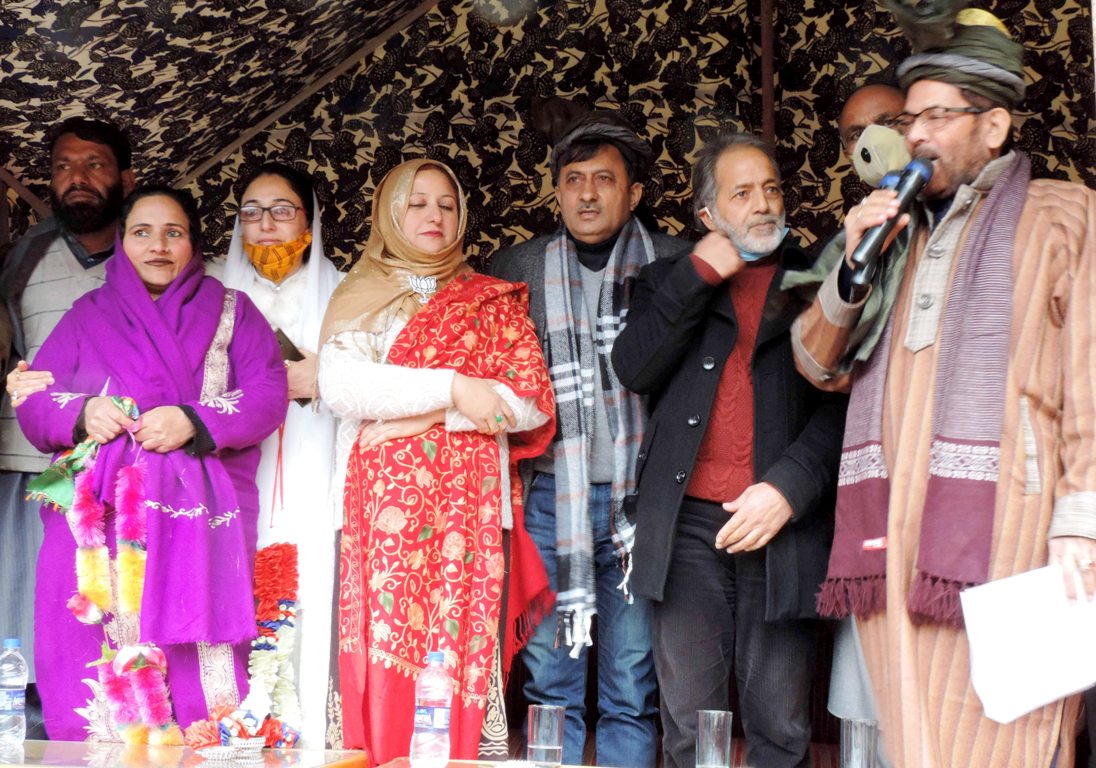
Has BJP entered Kashmir Finally?
BJP contested 104 of 140 seats across 10 Kashmir districts won three seats while bagging 30 thousand votes out of 9,56,7669 polled in the 8-phase exercise. These included 8959 votes from South Kashmir, 6381 in central Kashmir and 15310 from north Kashmir.
BJP’s Kashmir vote share increased minimally to 3.3 per cent in comparison to 1.3 per cent in the 2019 parliament election. In 2014 assembly and parliament elections, BJP’s percentage share in Kashmir was only 1.2 per cent and 2.2 per cent, respectively.
However, the BJP created history by winning three Kashmir seats. In Pulwama’s Kakpora-II DDC segment, BJP candidate, a female law student, won by a margin of 14 votes. It was because Peoples Democratic Party (PDP) and National Conference (NC) fought against each. The two PAGD constituents separately polled 538 votes thus permitting BJP to wrest the seat with 364 votes only.
In Srinagar’s Khonmoh-II, the BJPs’ Aijaz Rather, an engineer, won by a margin of 442 by defeating Apni Party. Rather bagged 823 votes against 381 votes of Apni Party. Nomination papers of the PAGD candidate had been rejected.
The third seat that BJP won was Bandipora’s Tulail seat, where Aijaz Ahmad Khan polled 2523 votes. His runner up, Abdul Samad Lone, was too distant with 1193 votes.
Though there was no PAGD candidate, NC Vice President Omar Abdullah and PDP President Mehbooba Mufti raised questions alleging that Tulail has a huge deployment of the army. The refrain of the duo was common: “We all know how they won in Tulail.”
Unlike PAGD, BJP went all guns blazing to campaigning with incumbent Union ministers Mukhtar Abbas Naqvi, Anurag Thakur, Jitendra Singh, Smriti Irani and Krishan Pal Gujrar. Besides, senior BJP leaders, including Tarun Chug, who is J&K in-charge of the party, Shahnawaz Hussain, Zafar Islam, and Ramesh Bidhuri, spent weeks in Jammu and Kashmir divisions. Shahnawaz was camping for almost a month in Kashmir.
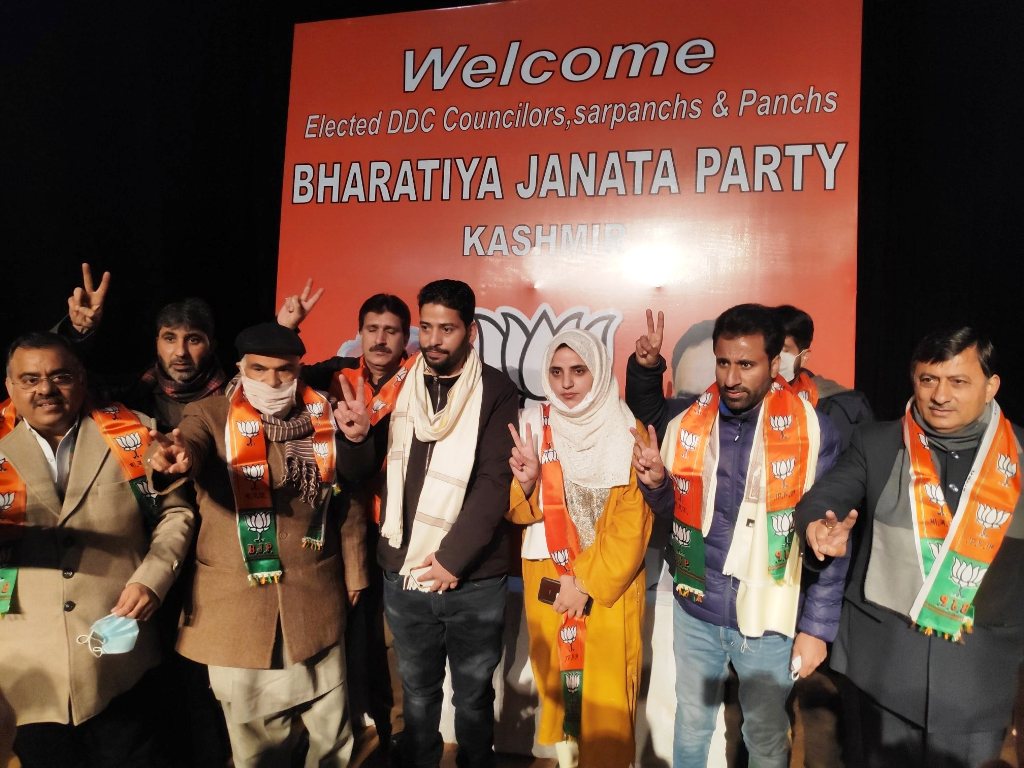
How Many DDCs Are With BJP?
The question sounds juvenile if one goes by the viral bite of a young lady BJP worker from Chadoora. “Humnay Jitni Victory Marni Thi, Mar Li, Power Waisay Bhi Hamray Pass Hi Hai.”
Numerically, however, BJP has a clear majority in six (in Jammu) of the 20 DDCs in Jammu and Kashmir while PAGD has a clear mandate on 13.
BJP crisis is that while it has emerged as the single largest party, the anti-BJP forces have won more seats in DDC elections.
The only DDC across Jammu and Kashmir that lacks a clear picture is Srinagar where independent candidates have won 7 seats of the 14 seats; JKAP has three and NC, PDP, JKPM, and BJP have a berth each.
BJP could takeover Srinagar if it gets all seven independents on its side, thereby taking the tally to 8 seats. The horse-trading is on. One report said Harwan independent has Peoples Conference. Another report said even Qamarwari winner has joined the same party. But BJP has an ally with three seats.
BJP will clearly rule Samba (where it has 13 of 14 berths – the remaining one is with NC); Kathua (13/14, the remaining one with BSP); Jammu (11/14 – one w3ith NC and 2 independents); and Udhampur (11/14 – 2 with Panthers Party and one with an independent).
Chenab valley offers a slightly different picture. Doda DDC can also go to BJP (8/14 – 4 with Congress, one each with NC and an independent) despite its top leader Shakti Raj Parihar losing from two seats. In Reasi (7/14 – 3 NC, Congress and independent Sajira Qadri one each) it can tie-up with Apni Pary which has two seats.
However, the BJP’s fortunes have changed in Ramban where NC won 6 seats followed by three seats each by independents and two for Congress. It is expected to be an NC-Congress alliance. Same was the case in communally sensitive Kishtwar where NC has won six seats followed by three seats each by BJP and Congress. It is also expected to be NC-Congress DDC.
The Pir Panjal belt has thrown up an interesting situation. In Rajouri, NC has won five, Congress three, BJP three and one each has gone to Apni Party and an independent. Most likely, it will have a secular leadership.
Interestingly, BJP president Ravinder Raina’s home constituency, Nowshehra, was wrested from the party by PDP.
In Poonch, independents have swept polls on eight berths leaving four to Congress and two to NC. The BJP had no gains. How will the final calculation work remains to be seen like Srinagar?
PAGD will manage most of the remaining as it has enough numbers: Ganderbal (11/14); Budgam (10/14); Baramulla (with Congress 9/14); Bandipora (7/13 – 3 are with independents); Kupwara (9/14); Anantnag (9/14), Kulgam (12/14); Pulwama (9/11) and Shopian (with Congress 8/14).

Is BJP The Future Of Jammu And Kashmir?
It is unlikely but the party will require a permanent address and a stake for addressing the larger audience. In terms of strike rate, BJP was on the fifth of the eight parties which were in the fray. BJP contested the highest number of seats but won quite a few – 72 of 131 in Jammu and 3 of 104 in Kashmir.
The best performance was that of Peoples Conference at 80 per cent followed by CPI(M)’s 71.1 per cent; NC’s 40.9 per cent; and PDP’s 39.7 per cent. The BJP, on the other hand, had 32.6 per cent strike-rate in these elections which was only better than 27.3 per cent of JKPM and 16.3 per cent of the Congress.
In fact, BJP’s vote share in its bastion of Jammu has gone down significantly – from 48.2 per cent in 2014 Lok Sabha, to 40.2 per cent in 2014 assembly to 59.3 per cent in 2019 Lok Sabha to finally 34.4 per cent.
The vote share gain in Kashmir has also been minimal for the party from 1.3 per cent in 2019 parliament polls to 3.3 per cent now. However, the BJP’s vote share in these polls in Jammu and Kashmir is 24.82 per cent which is higher than 22.98 per cent in 2014 assembly polls.
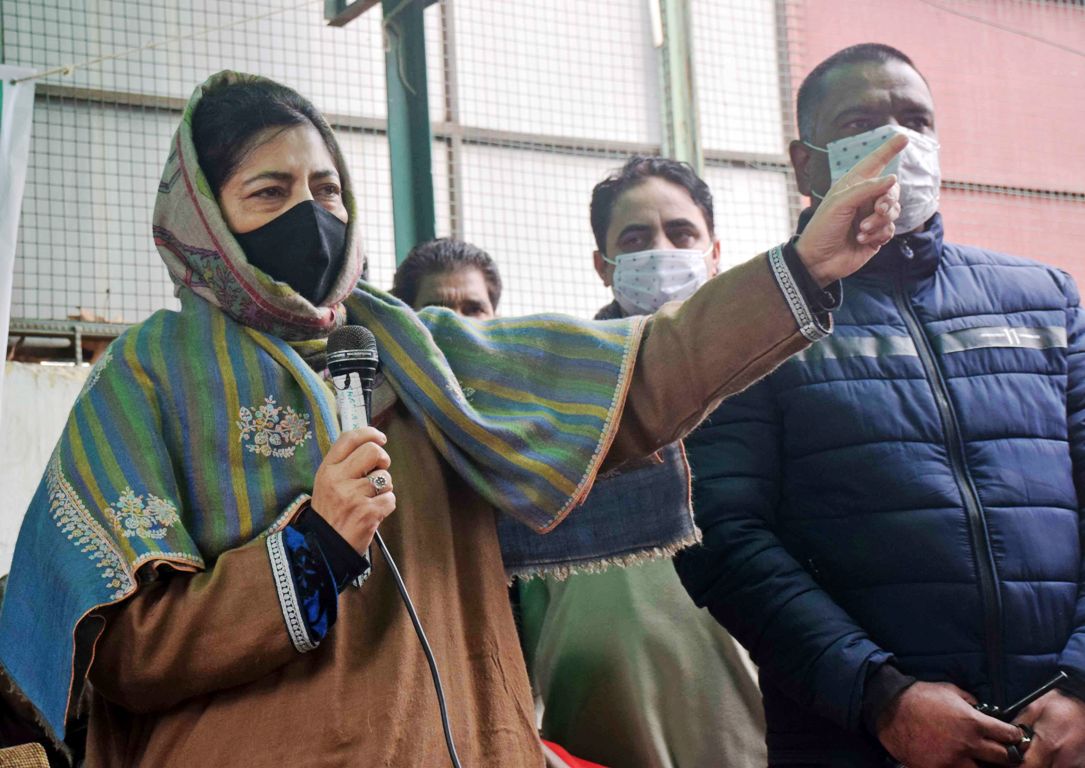
Has PDP Been Decimated?
The PDP which presided over two coalition governments since their inception in 1999 lost 41 seats of the 68 they contested in the DDC elections.
Once a formidable party across Jammu and Kashmir, the PDP won just one seat in Jammu region wherefrom it had three lawmakers in the previous assembly. However all three—Choudhary Zulfiqar Ali, Qamar Hussain, and Shah Mohammad Tantray—have left the party. Its strike rate (39.7 per cent) is slightly lower than its rival National Conference (40.9 per cent). The party also has a very low vote share in these elections at 3.96 per cent in comparison to 22.67 per cent in 2014 assembly polls.
Having lost 29 leaders, including founding member, in the last two years, PDP contested on 68 seats in the PAGD out of a total of 280. In comparison, the NC fought on 165 seats, winning 67 of them eventually. In its erstwhile south Kashmir bastion, PDP won 16 seats out of 56. In 2014 assembly polls, PDP had won 11 assembly segments out of 16 from this belt. In Budgam district, where PDP and NC had two assembly segments each in 2014, PDP officially won just one segment against NCs 8. In north Kashmir’s, PDP has won 8 DDC berths out of 42. In 2014, the PDP had won 7 assembly segments out of 15 in these districts. In these polls, the PDP lost all four DDC segments in Kupwara where it still has a Parliament (Rajya Sabha) member.
Mehbooba Mufti, however, sees the situation differently, insisting the party survived despite Delhi tried everything “finish off” PDP. “They celebrated the obituary of my party in previous years. But now they had to bite the dust,” Mehbooba said, adding that if they (PAGD) would have been given level playing field in elections then her party would have won more seats. “I am sweetly surprised to achieve this much in these elections despite the curbs on us.” DDC polls, however, helped NC to return to certain pockets in South Kashmir where its re-entry sounded difficult a year earlier.

Is Not Apni Party’s Performance Spectacular?
The Jammu and Kashmir Apni Party (JKAP) founded in March 2019 by businessman and former PDP leader, Syed Altaf Bukhari won 12 seats in Jammu and Kashmir out of 170 it contested. With meagre 7 per cent strike rate, the JKAP preferred development over politics. The party’s vote share was 5.3 per cent with 38000 votes being cast in their favour across Jammu and Kashmir.
In Baramulla, considered to be a stronghold of the AP, because all top leaders belong to the area, it won only two segments. In Baramulla, Ladoora and Rohama – the ancestral villages of Syed Altaf Bukhari and Dilawar Mir, JKAP’s Zahoor Mir lost to PAGD’s Shabir Lone. Party’s district president, Shoaib Lone and his mother lost from Sangrama and Wagoora segments, respectively. Party spokesperson and former MLA Javid Hassan Baig’s both the candidates from Narwov and Baramulla lost the battle. In Dilawar Mir’s Rafiabad belt, both the seats were won by PAGD candidates. The solace came from Tangmarg where Ghulam Hasan Mir’s nephew Mir Tajamul Ishfaq won.
No DDC is expected to be headed by the PAGD. But it can cobble an alliance with independents and BJP at a few places. Its focus, however, is on Shopian and Srinagar.

Why Did So Many Independents Win?
With “alternative leadership” as the new political grapevine, 50 independent candidates – 27 in Kashmir and 23 in Jammu – are seemingly a huge population in 280. Cumulatively, they had a vote share of 27 per cent, as many 1238 of 2178 candidates were independents. Now being referred as “kingmakers” in four DDCs in Jammu and one in Kashmir where there is no clear majority to either PAGD or the BJP, they include many individuals of some reputation – lawyer Irfan Hafeez Lone (Kreeri),
Safeena Baig (Wagoora); Riyaz Choudhary (Loran), Taranjit Singh (Suchetgarh), Avtar Singh (Dadsara), Bilqees Jan (Zainapora).
The presence of such a large number of “free-floating electrons” is key to horse-trading and eventually SMC-style instability. BJP is hailing the independents as an indicator that people are fed up with the “Gupkar Gang”. BJP’s Shahnawaz Hussain already said that the party has fielded “a large number of independent candidates which would support them after the elections”. Pertinently, two independent candidates, Fazildin Deedaad and Abdul Rashid Lone who won from Kellar-I and Hermain-II segments of the Shopian district have already joined JKAP. NC leader,
Omar Abdullah, however, alleged the police are fording his party‘s elected candidates to join Apni Party, He played a phone call to media in which somebody was linking the joining of a candidate to Apni Party with the release of his brother. In one case, even the son of a winner also held Apni Party and the police responsible for “abduction” of his father.
Srinagar is expected to be the major canvas of the independent’s activity. The city already had the third leader of the SMC in less than two years.
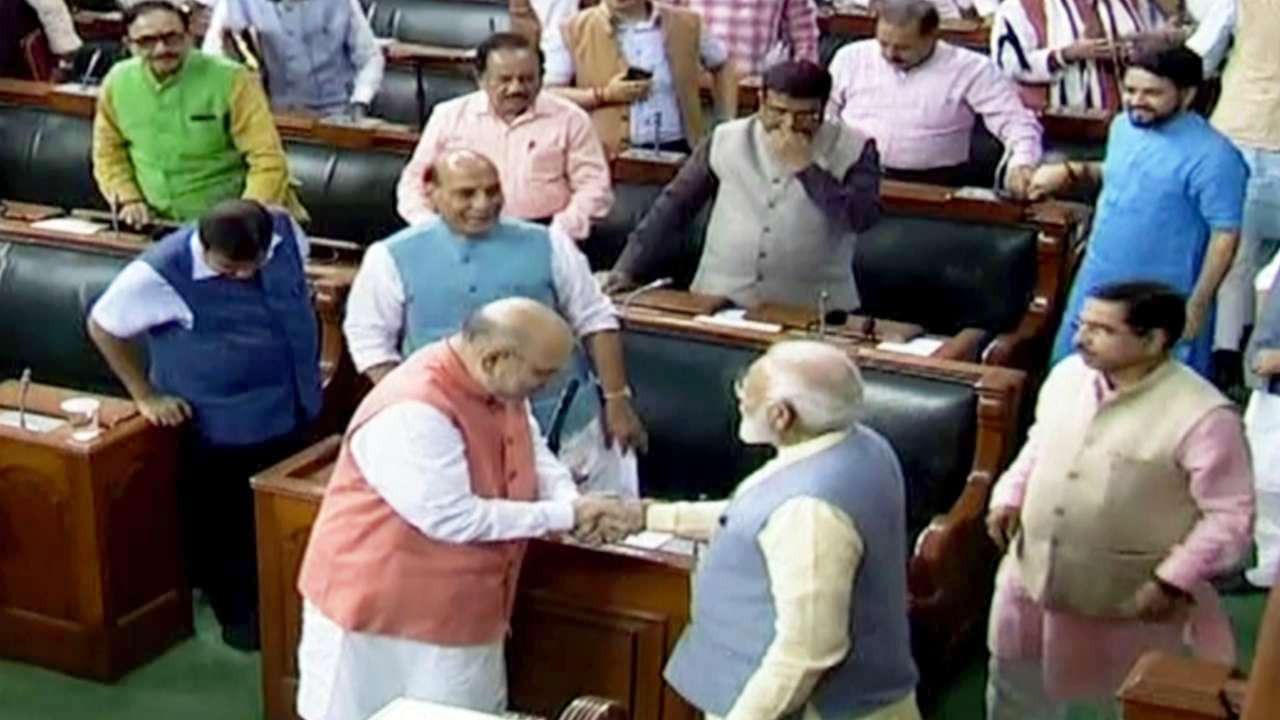
Was DDC Election A Referendum On Article 370?
Given the polls were the first to be held post-August 5, 2019, certain Delhi media billed this as a “referendum” to determine whether the people supported the federal BJP government’s unilateral actions or not. PAGD jumped into the ring with a sole avowed objective to deny the space to BJP and its allies. Apni Party, Congress and BJP, however, talked about development.
However, the suddenness created ripples in the PAGD which was not ready to contest, unlike BJP and Apni Party. Most of the candidates alleged that they were quickly shifted to security spots, there was apparently no campaigning. In fact, NC and PDP top leaders did not move out of their homes, either because of Covid-19 or owing to the restrictions they alleged they were subjected to.
Unlike Jammu, participation in Kashmir was modest and low. It was not a referendum but yes the vote was less of pro-PAGD and more of anti-BJP.

Is PC Kashmir’s Third Regional Party?
Sajad Lone led Jammu and Kashmir Peoples Conference (JKPC) has emerged as the largest party in two districts of north Kashmir. It managed to win 8 of the 11 seats it contested in Kashmir that fetched it the highest strike rate of above 80 per cent with a vote share of 1.98 per cent. It won five of six in Kupwara, three of four in Baramulla.
In 2014, the JKPC had won two assembly berths from Kupwara district—Handwara and Kupwara—with Sajad Gani Lone becoming a cabinet minister from BJP quota in BJPDP coalition. Later in 2018, JKPC contested the Urban Local Body and Panchayat elections, boycotted by PDP and NC. Later, it unsuccessfully fought the 2019 parliament polls against PDP and NC.
Unlike the JKPC, Jammu and Kashmir Peoples Movement headed by the several-time lawmaker and former minister Javed Mustafa Mir won just three of 11 it was mandated to contest. The Awami National Conference emerged as an embarrassing PAGD liability as it could not win even one of the five seats. Outside PAGD, the biggest loser was the Peoples Democratic Front (PDF), headed by another several time lawmaker and former minister Hakeem Mohammad Yaseen. He had fielded candidates across Budgam district but managed to win just two segments while losing in its founder’s own bastion of Khansahib and Panewa DDC segments to the NC.
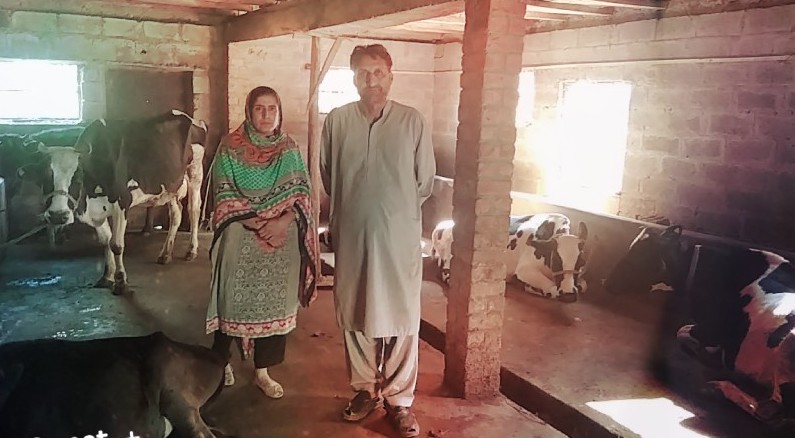
Has Claims Over Muzzafarbad Been Renounced?
These DDC elections brought to the fore an interesting issue involving the so-called “Pakistani brides”, the PaK origin women, married and settled in Kashmir. They had accompanied their husbands under 2010 surrender and rehabilitation package. Two of these women had contested this election. Counted was stopped midway and the results are not known for Drugmulla and Hajin.
“Government of India’s assertions that POK is an integral part of Indian territory has proven hollow after it stopped vote counting of a POK’s female candidate who had contested DDC polls in from north Kashmir’s Kupwara,” Usman Majeed said, “By stopping vote counting of POK returned candidates midway Government Of India has proved that POK is no longer the integral part of India and bringing back POK into India is merely hollow slogans.”
Shazia Aslam, who originally hails from Muzaffarabad (PaK) is married to an ex-militant, Mohammad Phaphu in Banyari (Hajin). There was no problem till the counting started. A Lok Sabha resolution has said that PaK is part of Jammu and Kashmir and a new map, post-August 5, shows that as well.

How National Parties Performed Alongside PAGD?
Barring BJP, there were two national parties in the fray – Congress and CPI (M). Initially, both were with PAGD but latter Congress contested independently after BJP’s whiplashing.
With its influence confined to Kulgam, CPIM chose to fight five seats instead of three given by the PAGD. They won all five – Pombay, Behibag, Kulgam-A, Kulagam-B, and Qaimoh-B. They won Behibag against the NC while on Pombay seat they defeated the PDP.
The Congress party which has the second-worst strike rate, 16.3 per cent, after JKAP won just 26 seats out of 157 seats it contested across Jammu and Kashmir. The party’s vote share in the election, 13.82 per cent, is lesser in comparison to 18.01 per cent in the 2014 assembly polls where the party won 12 seats.
Jammu and Kashmir Congress President’s son, Naseer Mir also lost badly from the Verinag DDC segment against a former party loyalist, Peer Shahbaz who alleges he was axed to accommodate Mir Jr.
In Kashmir the region, the party won nine of the 140 seats while in Jammu it won the remaining 17 seats.
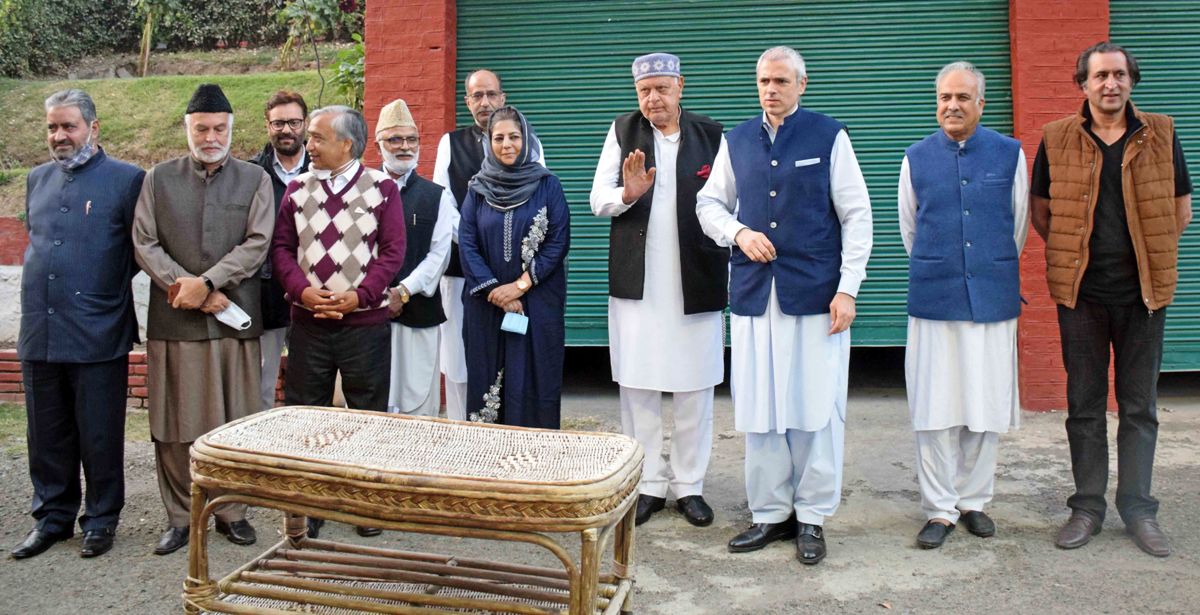
Will PAGD’s Ship Remain Afloat?
With NC President Dr Farooq Abdullah first asserting that it was difficult to align with PAGD members in the first place and then claiming that “PAGD is here to stay”, the faultlines in the loose alliance are more visible. The PAGD fought each other through proxies across Kashmir. In Kulgam, PAGD left no room for either BJP or the Apni Party. PAGD failed in rational seat-sharing forcing them to openly contest against each other in Budgam.
“The real test of their unity wasn’t in these (DDC) elections,” Altaf Bukhari of Apni Party said hoping the assembly election is the challenge. “We will see if they can stay together till then.”
Off record, NC and PDP leaders accept that there was infighting and proxy candidates were contesting against each other. Senior party leaders, across PAGD, agree that they should have fought separately and then stitched an alliance.
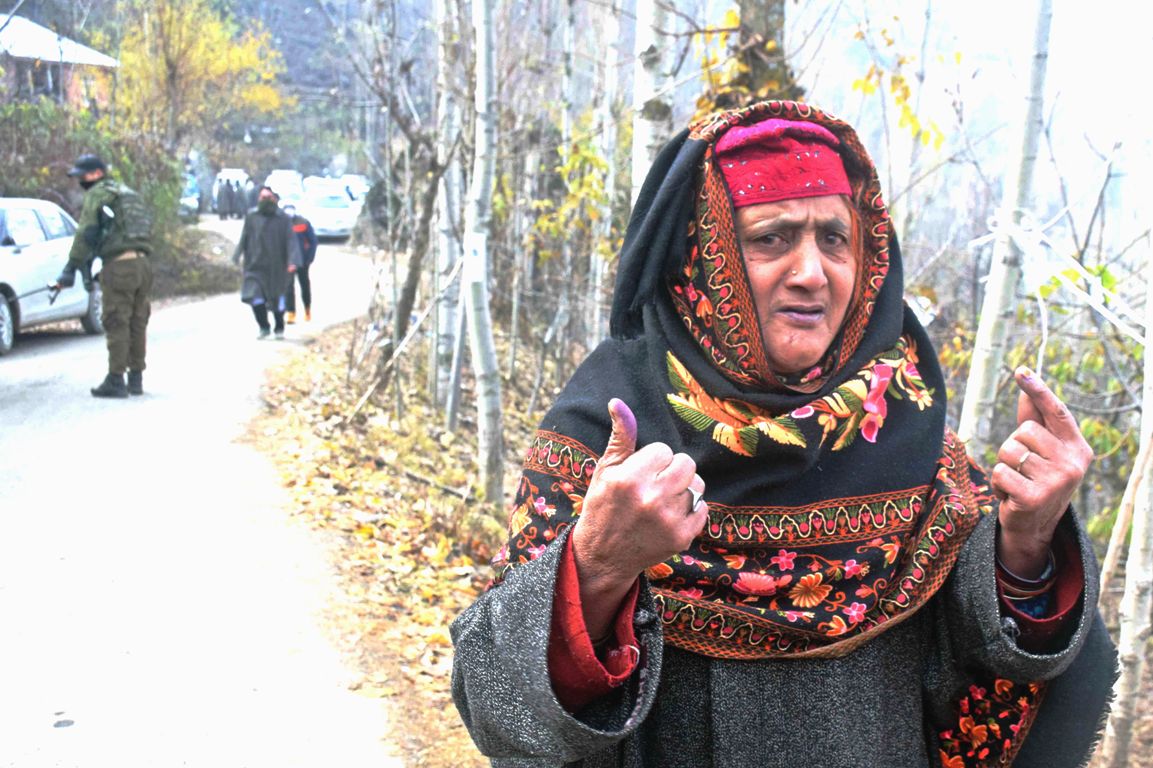
Have Many People Voted?
The elections to this third tier of the Panchayati Raj system were held in eight phases from November 28 and to December 19 with 51 per cent of the 57 lakh eligible voters exercising their franchise. Of them, 28 lakh cast their votes in Jammu and Kashmir – 18, 97,840 people in Jammu region and less than half of it, 957669 from Jammu.
Unlike Jammu’s 64.21per cent participation, Kashmir witnessed 40.65 per cent in the first phase. Kashmir witnessed 33.5 per cent in the second phase; 31.61 per cent in third; 31.95 per cent in fourth; 33.57 per cent in fifth; 31.55 per cent in sixth; 39.52 per cent in seventh and 29.91 per cent in the eighth phase.
Jammu division, on the other hand, witnessed higher participation across phases with 65.6 per cent in the second phase; 68.88 per cent in third; 69.31 per cent in fourth; 66.66 per cent in fifth; 68.56 per cent in sixth; 71.93 per cent in the seventh and 72.71 per cent in the eighth phase.
PAGD won 84 seats in Kashmir and 26 in the Jammu region. In Jammu, better participation helped it gain better unlike Kashmir while low participation limited its gains.















